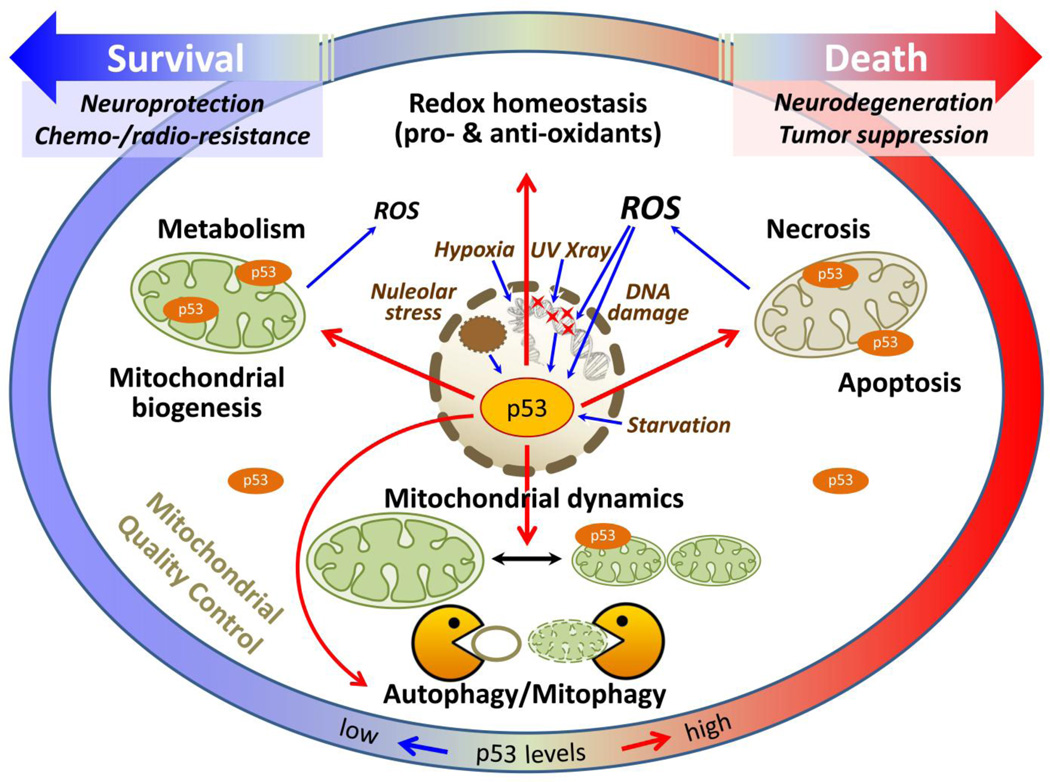Figure 1.
p53 plays numerous distinct roles in mitochondria-related processes, such as apoptosis/necrosis, autophagy/mitophagy, mitochondrial quality control and cellular redox regulation, depending on its expression levels, subcellular localization, availability of cell-specific binding partners, and cellular state (i.e. resting versus stressed). Nuclear p53 is activated (upregulated and/or stabilized) by cellular stress including DNA damage, hypoxia, oxidative stress (ROS), nucleolar stress and starvation, and transcriptionally activates or represses p53 target genes, leading to a variety of downstream effects. p53 can also translocate to the cytoplasm and to mitochondria, where it can directly bind to and activate or inhibit proteins and pathways related to mitochondrial function. p53 actions related to mitochondrial quality control (to the left) are largely functional at basal (physiological) levels of p53 expression, while its pro-death function (to the right) requires higher levels of p53. The same is generally true at the individual gene/protein level within any specific category of p53 function where pro-survival actions are seen with physiological levels of p53 expression, while pro-death actions are induced by upregulated levels of p53.

